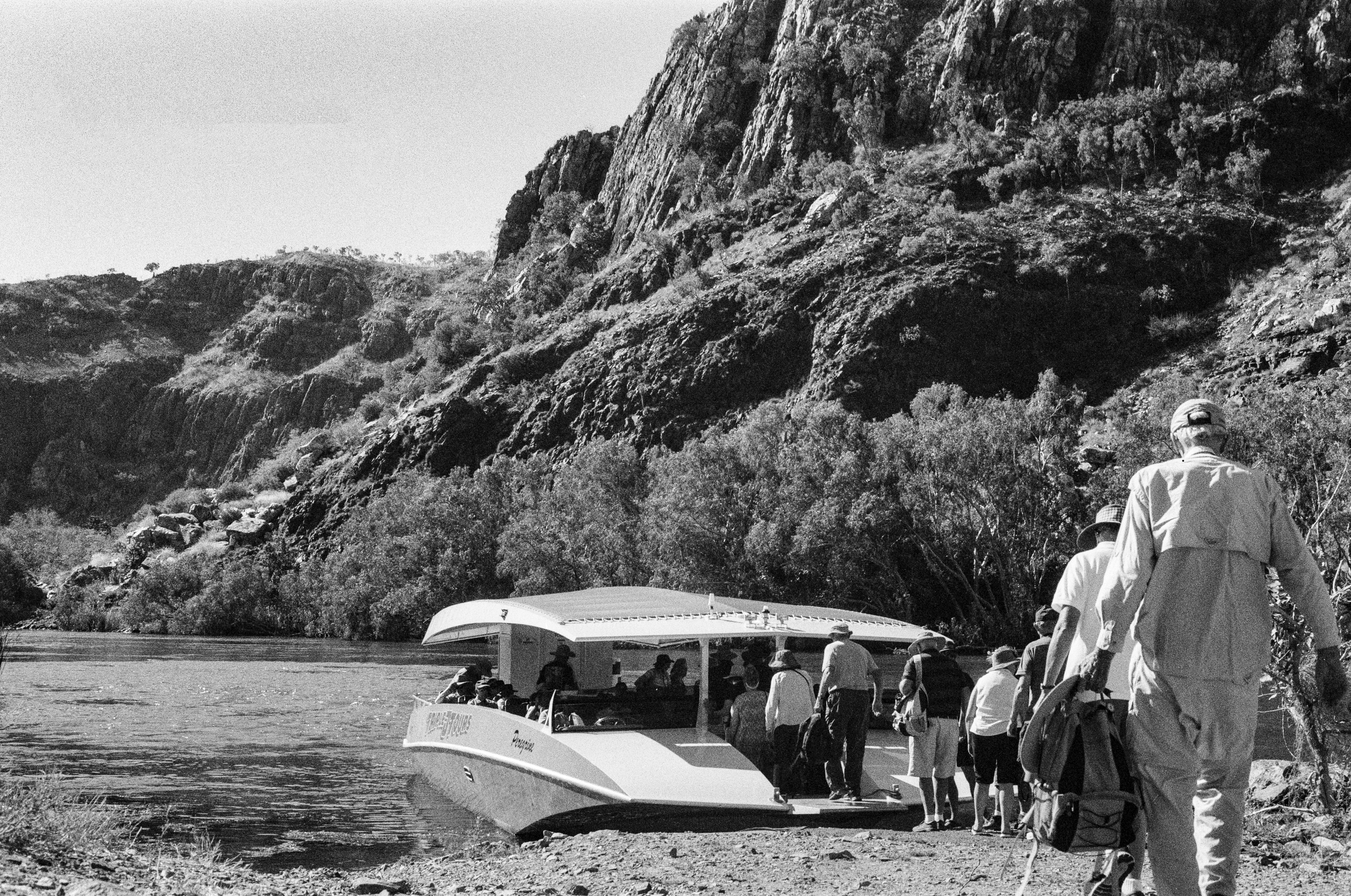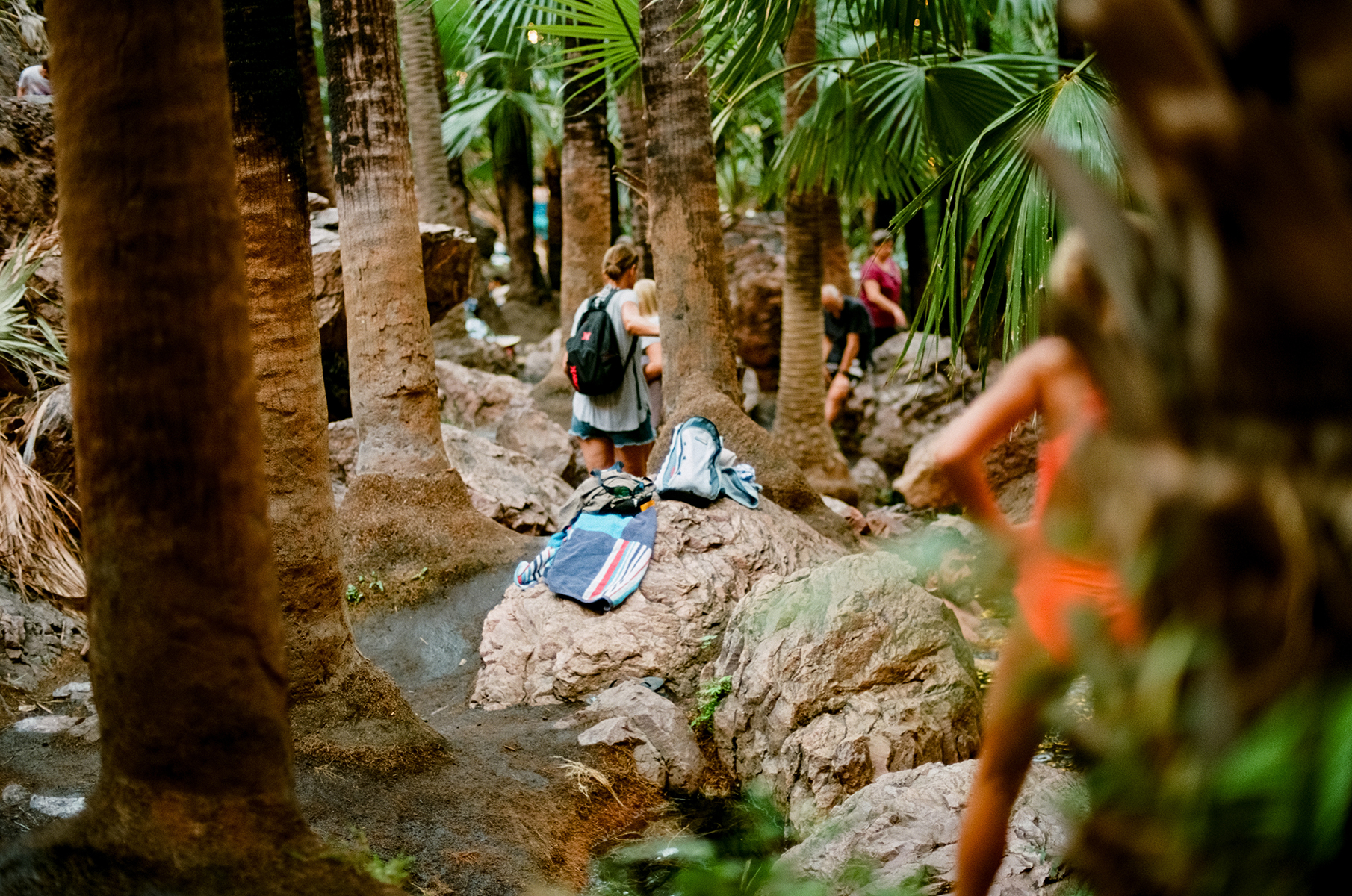All the Violence Within This

19 July 2020
A response by Robert Wood to the work of Alana Hunt


^^^ Alana Hunt, untitled work in progress, 2019–ongoing.
In October 2019 Alana Hunt was artist-in-residence at PICA. While in Perth, Alana spent time in various historical archives in the search for documents that connect to the north east of Western Australia, seeking to understand attitudes towards the invasion, development and industrialisation of that region. Through collage, restaged and documentary style photographs, and social practice, Hunt’s work wrestles with non-Indigenous Australia’s idea of the north and its ongoing colonisation. This text by Robert Wood was written in response to a talk Alana gave about work in process during residency.
—
—
THE STATE
The false consciousness of the Australian nation is its monoculture, its monolingualism, its monotheism. That is challenged by multiculturalism, multilingualism, and polytheism, which are all lived realities of citizens and those that live on the continent outside the state. But, what does that mean? If we are used to seeing the state, we see it everywhere, and, yet, if we do not, what can we see instead?
Rather than taking Australia as an established fact and a structuring device, or simply as a thing to resist, what does life in this place tell us about the world, language, and the gods? The former, an established fact, would simply be the white settler colonial apparatus in a historical and raced paradigm, with the latter being Aboriginality as its oppositional force. In other ways, the state might be misogynistic or capitalist or some other such form, and they have their resistances too—feminism, communism, amongst them. All these are animating antagonisms that matter for discourse particularly when one is inclined to see conflict as the engine of history. They matter less when one has gone fishing.
And so, we return to what is the state and what is not on this continent? In asking that, I think we still do not know the answer. And if we cannot define it, then our critique, art and politics risks being built on lazy shibboleths that might not be true, or, it replicates the state’s own expansionary ambitions and controls us further still. If we name the state, we might liberate ourselves from it rather than simply negate, resist, or oppose it. This is about transcending the state’s power, logic and spirit. It does not necessarily mean replacing sovereignty with another relationship that has god as the legitimating force for life here. If anything, sovereignty requires a repatriated and translatable social contract that pays attention to what has not yet been observed. It is about listening, looking and leaving, which is why I turn to Alana Hunt’s work.
ALANA HUNT
From Hunt’s perspective, the state is violent towards people here, and that is carried out by citizen perpetrators (many of whom are white settlers) against those on unceded land (many of whom are Miriwoong people and from neighbouring countries). Working at what might be frontier, what might be centre, in ‘the Kimberley’, Hunt attends to and critiques the white settler apparatus. She demonstrates there is still conflict on this continent and recognises the subtle forms it takes today. We know the conflict from history, particularly in the massacres that came with Invasion, even as we can hear of pre-colonial arguments between neighbours and within families. And yet Hunt’s work, in this instance, is focused on the contemporary.
The material expressions of violence here now, in Hunt’s particular telling, are to be found in infrastructure and leisure primarily. This is not to overlook the prisons, the courts, the police; or even the random acts of violence that do not enter the legal system. It is to interrogate the banal expressions that often go unremarked upon by activists, and, to a lesser extent artists. There is no group that protests the Main Roads Department or Tourism Australia when perhaps there should be after viewing Hunt’s work. To some extent, this banality connects Hunt’s photographs to that of others referencing the quotidian, the domestic, and, the everyday; work that can be found in urban and suburban settings as well. And yet, if one is oriented to the state, this is inflected by a race politics that is inescapable even as it intersects with a number of other identity valences.
There is, of course, a backstory to infrastructure and leisure, or to the state’s violence as well. People build things. People go on holiday. People are enmeshed with colonialism. That goes without saying. What is striking here is that Hunt asks us to look again, to see something that can be changed because of how it relates to and is connected with the state as a whole. On the country itself there are bridges that are constructed, roads damaged by flood rebuilt every year or so, taking produce to international cities, tarmac when once was foot traffic, surveyor’s flags for what is to come. There are bodies that are white, pink, male, soft; half naked, vulnerable, foreign bodies that are familiar and exotic in the landscape that we are witnesses of, voyeuristically peering at, and, waiting for them to leave, either because of us or because of their shallow impatience. There is new and resolute concrete that is ready to disappear in a timescale of a thousand years. There are citizens entitled and emboldened that are ready to bleed. These are things and people. And so, if we asked what is the state at the beginning, we find an answer in Hunt—it is structural violence whose material expression is infrastructure and leisure.
VIOLENCE
The state offers a form of unritualised, ugly, and mundane violence. It lacks the ceremonial even if it clothes itself in forms borrowed from elsewhere when cadets become officers, when soldiers are given awards, when courts deliver judgements. This is because it believes itself to be uncontested in its supremacy. The army and the police are the only ones that can kill us without it being murder. Its power, logic, spirit is violent. The state as violent is seen in how it treats ‘wards of the state’, which comes from parens patriae, which is to say, the ‘nation as parent’. It is the one that abuses its children.
How then do we respond to violence?
The violence of the past is never gone, but its material expressions change along the way, from massacres to deaths in custody, from poisoned flour to youth suicide, from small homesteads to small mines, from the picnics of pastoralists to the selfies of tourists, from the dams of yesterday to the water wars of the future. We respond to violence by marking it, by witnessing, by imagining how it could be different. We know of the talking cure for trauma, but what of the silence cure? To turn off, get away, go fishing with family - not an end, but a chance to sit with it, to heal if not perfect. This is not a romantic return to what never was. Rather, it is an observation that attends to the state and directs us towards a different future.
POST-SCRIPT
I remember when I went to Woodbrook Law Ground for my brother-in-law’s initiation. I had a role to play from getting items used for parts of the ceremony (bags of flour and red wool), going out hunting and preparing the fire (for goanna and kangaroo), looking after kids whose parents had business to attend to, picking up guests and making sure they had their ritual items, and driving backwards and forwards from town. I also remember having to leave at certain moments because if I stayed it would be dangerous for me, and against the Law. At those moments, I read Cesar Vallejo in town instead.
That place is not the same place that Alana talks about here. But it is connected through routes that are as old as we know and these extend all over the continent. What matters too is how this is expressed, which is complex to outsiders’ eyes and ears, when one looks closely. Art helps one look closely, look differently.
Law is not built on the state’s violence. That much is the truth, and, I know this from Bidirra and speaking with people beyond the Pilbara. If people want to know about those Laws, they need to ask the right people. I have not been through and will not, not anytime soon. It is enough for me to know these outlines that are public. And to know that where I come from, Puthucurichy in Malayali country in Kerala, we wait to reach the shore. We ask our ancestors for guidance. We wait till we are invited to see if we can lend a hand. To listen, to look again, to leave when asked, that is the way out of violence. That is what Hunt’s work allows us to begin a petition for.










^^^ Alana Hunt, All the Violence Within This series, 2019. Supported by the Copyright Agency’s Cultural Fund.


^^^ Alana Hunt,
untitled work in progress, 2019–ongoing.
Further reading:
Alana Hunt ‘No Easy Feat’, Meanjin Quarterly, Spring 2017.
This Semaphore has been culturally approved by a Ngarluma Traditional Owner. All images are courtesy of Alana Hunt.
Alana Hunt ‘No Easy Feat’, Meanjin Quarterly, Spring 2017.
This Semaphore has been culturally approved by a Ngarluma Traditional Owner. All images are courtesy of Alana Hunt.
